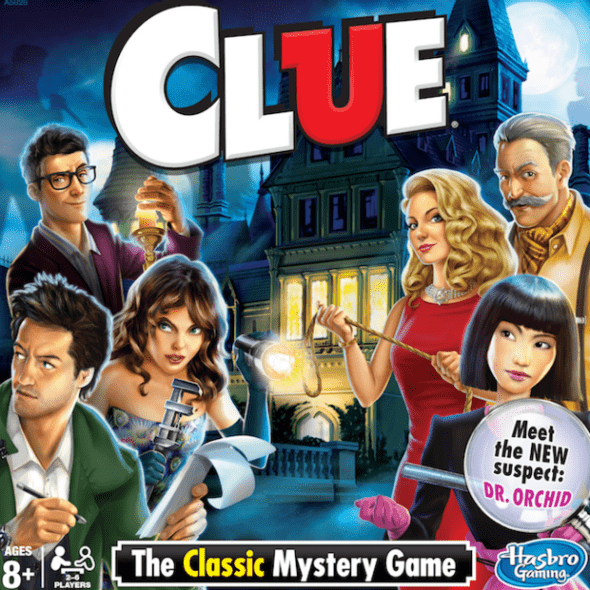How To Play: Clue – Setup, rule summary and strategy
This guide provides comprehensive insights into mastering Clue, covering each crucial aspect from setting up the game, maneuvering through gameplay strategies, tracking clues for elimination, to tips for winning. It's a step-by-step manual on becoming adept at the game.

Welcome to our in-depth ‘How To Play Clue’ guide, where we uncover the mysteries not just of the infamous Whodunit game, but also how to excel at it. Whether you’re dusting off an old board beside friends or deciphering clues for the first time, understanding the foundational rules is paramount. Alongside a concise rule overview, this guide offers expert strategies gathered from many game nights, aimed at steering you towards victory. Ready your notepads and keen sense of deduction—we’re diving deep.
Overview
What’s in the box
- 1 Game Board
- 6 Tokens
- 6 Miniature Weapons
- 21 Cards
- 1 Detective Notebook
- 1 Case File Envelope
- 2 Dice
- 1 Pad of Detective Notes
How To Play Clue: Rules Summary
Setup Steps
- Distribute characters, weapons, and the rooms randomly.
- Place the weapons and characters in the starting positions on the board.
- Put one of each type of card (suspect, weapon, room) into the confidential envelope.
- Shuffle and deal the remaining cards evenly among players.
Gameplay Mechanics
- Players move around the board entering rooms to make suggestions.
- Upon suggestion, another player must disprove the suggestion if able, by showing one relevant card.
- If a suggestion cannot be disproved, it raises suspicion on those elements.
- Players take turns, moving, suggesting, and disproving suggestions.
Winning the Game
- To make an accusation, a player declares which suspect, weapon, and room they believe are in the confidential envelope.
- An accusation can be made at any time.
- If the accusation is correct, the player wins. If not, they’re out of the game, but must still respond to suggestions.
Special Rules & Conditions
- Secret passages connect opposite corners, allowing quick movement.
- If a player’s character is suggested, they must be moved to that room, potentially shifting strategy.
- Keep detailed notes to track suggestions and disproving evidence.
Best Clue Strategies
Mastering the Art of Suggestion in Clue
When playing Clue, leveraging suggestions wisely can dramatically upsweep your game. Firstly, it’s crucial to suggest possibilities that include cards in your hand, aside from one mystery element. This trick wholly leads opponents astray. Furthermore, making suggestions that force others to reveal cards can pinpoint which cards they hold. Resist the urge to repeat your inquiries; variety in questioning unveils more information. Engage in actively interpreting how players respond to each other’s suggestions. Mindfully strategize your moves; the outcome will significantly sway in your favor.
Strategy Over Suggestion
- Throw off opponents with your hands.
- Track revealed cards meticulously.
- Mix up your suggestions to avoid patterns.
- Analyse the deduction methods of your opponents.
Mastering the Art of Note-Taking in Clue
Taking effective notes is critical for sleuthing your way to a win in Clue. Here’s how to do it like a pro:
Designate Symbols
- Use specific symbols for guesses, denials, and confirmations. This keeps your sheet organized and quick to interpret.
Categorize Information
- Separate notes into categories (People, Rooms, Weapons). This way, you can quickly scan and assess possibilities in each category.
Track Players’ Questions
- Write down not just the suggestions each player makes, but also how others respond. This can indicate what cards they may or may not hold.
Include Timestamps
- Note the round when important revelations happen. Sometimes the game’s progression can give contextual clues to the mystery.
Mastering the Process of Elimination in Clue
Successfully navigating Clue involves adeptly eliminating impossibilities. This strategy dramatically increases your win rate. Let’s break down how to systematically use the process of elimination to unveil the truth.
Step 1: Watch Every Suggestion
- Kickstart elimination by carefully observing which suggestions make players give up cards. This narrows options.
Step 2: Deductive Logic
- Juxtapose revealed cards against remaining unknowns to exclude implausible scenarios.
Step 3: Use Your Suggestions Wisely
- Strategically query specifics aiming to confirm suspicions or refine deductions.
Step 4: Pay Attention to Other Players’ Actions
- Understand each reveal’s significance; their inquiries offer vital clues towards elimination.
Mastering the Mystery!
With a combination of focus on strategic suggestion use, meticulous note-taking, and the astute process of elimination, you’re well on your way to becoming a Clue aficionado. The excitement of Clue isn’t just in the solution, but in the chase, adapting your strategies as the game unfolds. Share your newfound insights, challenge yourself by playing with different groups, and always keep an eye out for that unexpected twist. Remember, every game is a new mystery, and now, you are equipped with the best strategies to unveil it. Happy sleuthing!
Want to know what we think of Clue? Read our detailed review of Clue here

